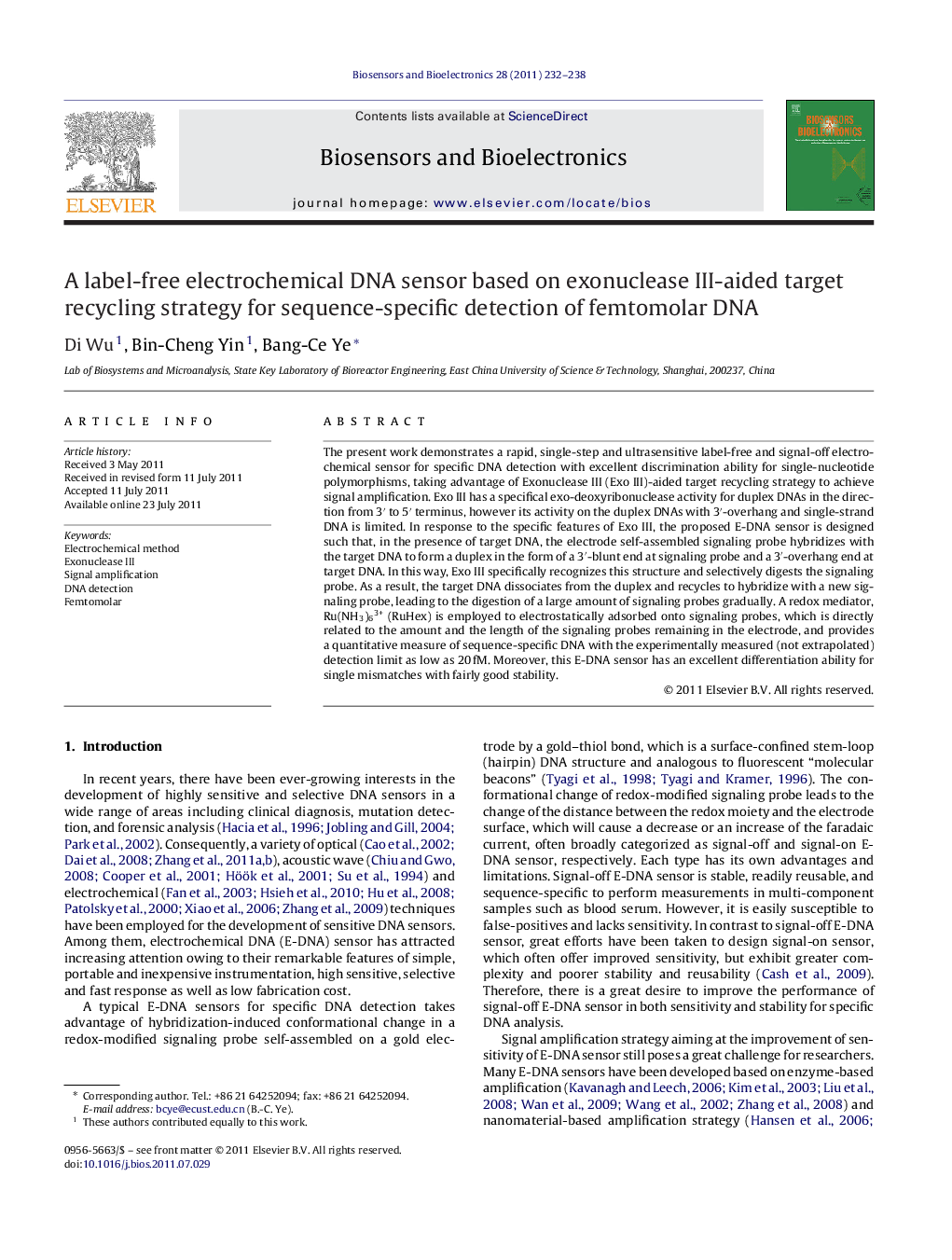| Article ID | Journal | Published Year | Pages | File Type |
|---|---|---|---|---|
| 10429476 | Biosensors and Bioelectronics | 2011 | 7 Pages |
Abstract
The present work demonstrates a rapid, single-step and ultrasensitive label-free and signal-off electrochemical sensor for specific DNA detection with excellent discrimination ability for single-nucleotide polymorphisms, taking advantage of Exonuclease III (Exo III)-aided target recycling strategy to achieve signal amplification. Exo III has a specifical exo-deoxyribonuclease activity for duplex DNAs in the direction from 3â² to 5â² terminus, however its activity on the duplex DNAs with 3â²-overhang and single-strand DNA is limited. In response to the specific features of Exo III, the proposed E-DNA sensor is designed such that, in the presence of target DNA, the electrode self-assembled signaling probe hybridizes with the target DNA to form a duplex in the form of a 3â²-blunt end at signaling probe and a 3â²-overhang end at target DNA. In this way, Exo III specifically recognizes this structure and selectively digests the signaling probe. As a result, the target DNA dissociates from the duplex and recycles to hybridize with a new signaling probe, leading to the digestion of a large amount of signaling probes gradually. A redox mediator, Ru(NH3)63+ (RuHex) is employed to electrostatically adsorbed onto signaling probes, which is directly related to the amount and the length of the signaling probes remaining in the electrode, and provides a quantitative measure of sequence-specific DNA with the experimentally measured (not extrapolated) detection limit as low as 20Â fM. Moreover, this E-DNA sensor has an excellent differentiation ability for single mismatches with fairly good stability.
Related Topics
Physical Sciences and Engineering
Chemistry
Analytical Chemistry
Authors
Di Wu, Bin-Cheng Yin, Bang-Ce Ye,
